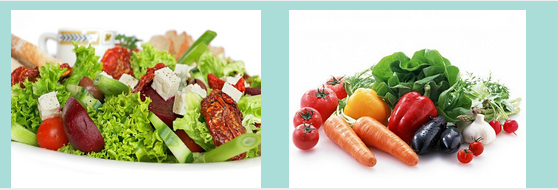The more color you have in your Dash Diet Rainbow Salad the more health benefits you have. Totally feel free to change it up or mix and match your favorite veggies.
This Dash Diet Rainbow Salad is super customizable
Here’s my rainbow salad color scheme:
-
- red bell peppers
- carrot
- yellow beet
- broccoli stems
Ingredients
- 1 red bell pepper
- 1 large carrot
- 1 medium yellow beet
- 1 large broccoli stem (or small zucchini)
- ½ cup cooked quinoa
- ½ cup crispy chickpeas (or more!)
- Parsley, chili flakes + sesame seeds for garnish, optional
Dressing
- 2 tablespoons almond butter
- 2 teaspoons rice vinegar
- 1 teaspoon miso paste
- juice 1 lime
- ½ teaspoon ginger
Chickpeas
- 1 (15 oz) organic chickpeas
- 1 tablespoon coconut oil
- Salt + pepper to taste
Instructions
- Preheat the oven to 375º F. Drain and rinse the chickpeas and spread them out on a baking sheet. Pat them dry with a paper towel, removing and skins that came off the beans.
- Melt the coconut oil or just rub it between your hands and then rub it on the chickpeas. Sprinkle with salt and pepper.
- Roast the chickpeas for 40 – 45 minutes until they’re crispy. To get your chickpeas super crispy, allow them to sit in the warm oven for 1 – 2 hours. Allow them to sit in the oven while you prepare the rest of the salad.
- Spiralize the vegetables using your spiralizer, cutting them into smaller noodles and add them to a mixing bowl. Add quinoa and toss to combine.
- Whisk together the dressing ingredients and pour it over the noodles. Toss again to combine.
- Transfer to two bowls and top with chickpeas.
- Garnish and enjoy your Dash Diet Rainbow salad.

Eat the Rainbow
Each color represented holds a special superpower
BLUE-PURPLE signals the presence of anthocyanins in foods like eggplants, beets, blueberries, red cabbage, and purple potatoes. Anthocyanins have been found to prevent blood clots, delay cellular aging, and may even slow the onset of Alzheimer’s.
GREEN indicates the presence of phytochemicals like sulforaphane, isocyanates, and indoles, which are anticarcinogenic and detoxifying. Many green veggies are part of the Brassica family, which includes broccoli, Brussels sprouts, bok choy, arugula, kale, cauliflower, and more.
ORANGE means the compounds alpha-carotene and beta-carotene are present and can be seen in foods like carrots, pumpkin, acorn squash, and sweet potatoes. Alpha-carotene protects against cancer and benefits skin and eye health; beta-carotene is a precursor to vitamin A and a powerful antioxidant within the body.
PALE GREEN-WHITE is caused by compounds called allicins, which have powerful anticancer, antitumor, immune-boosting, and antimicrobial properties. These are present in garlic, onions, leeks, and others. Many of these same foods contain antioxidant flavonoids like quercetin and kaempferol.
RED indicates a carotenoid called lycopene, found in tomatoes, bell peppers, and carrots. Asparagus also actually contains a good amount of lycopene—proof that you can’t always judge a book by its cover. Lycopene is protective against heart disease and cancer due to its powerful antioxidant activity.
YELLOW-GREEN means a food contains the carotenoids lutein and zeaxanthin, which are especially beneficial for the eyes and help protect the heart against atherosclerosis. Vegetables in this group may not always appear yellowish. In addition to yellow summer squash and orange bell peppers, spinach, collard greens, mustard greens, turnip greens, peas, and even avocados all contain these powerful nutrients.
